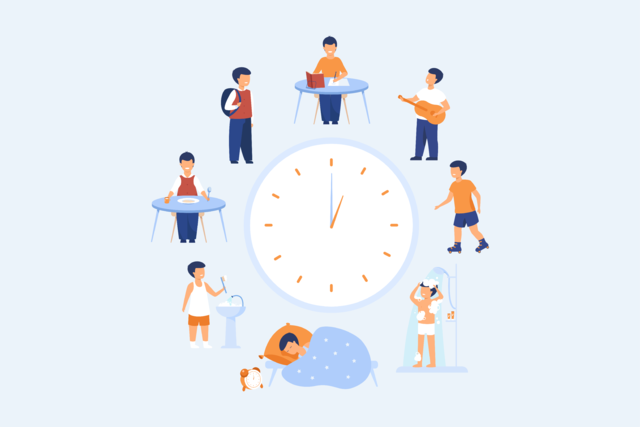Autism and Change in Routine: How to Help Children Cope
For caregivers of children with autism spectrum disorder (ASD), navigating autism and change of routine responses can seem like an incredibly difficult task. Individuals of all ages with autism tend to find comfort and stability in predictable routines and environments. And disruptions—especially unanticipated ones—can lead to stress, anxiety, aggression, and other negative outcomes.
Of course, change is inevitable. It’s important to learn how to mitigate negative responses to changes in routine, as well as to be proactive and provide children with tools that can help them better manage disruptions in their day-to-day lives. Keep reading to learn why changes in routine can be so upsetting to children with autism, plus advice for helping children cope with change when it does occur.
How Can a Change in Routine Affect a Child with Autism?
Routines and autism go hand in hand. Most children with ASD find comfort in rigid patterns and predictability—and many even insist on it. This applies to everything from morning, bedtime, and school routines to the foods they eat at mealtime and the way their toothbrush and toothpaste are arranged on the bathroom counter. Even something like putting on a new style of socks can be an incredibly stressful experience, leading to tantrums and other stress responses.
Simply put, what may seem like an inconsequential deviation to a neurotypical child can be a major behavioral trigger to a child with autism. Anxiety in particular is a common response to changes in routine, and many caregivers rely just as heavily on predictability as the child does in order to help mitigate and manage anxious outcomes.1
Note however that routines can be incredibly helpful for children with ASD, particularly routines that set clear expectations and goals for the day. For that reason, the objective isn’t to go against the child’s natural inclination to seek out routines and patterns. Instead, caregivers should make sure to educate themselves on the role that routines play for children with autism and learn to recognize when a routine is becoming more of a hindrance than a help. They should also have a plan in place for what to do when disruptions happen, because it’s unavoidable that they will.
Navigating Autism and Change of Environment and Routines
When it comes to autism and change of environment or a change in routine, it’s advised that caregivers have a strategy in place so they can respond appropriately and help children cope with the deviation from what was expected. The goal is to set clear expectations for the unexpected, responding in a predictable way so that there is at least some comfortable familiarity for the child. Here are some ways to do it.
- Provide children with a visual plan for each day
Create a detailed and easy-to-understand visual breakdown of what’s on the agenda for each day, and go over it with the child as part of their morning routine—even when the schedule is the same as always. When there are deviations, such as a trip to the dentist or an early release from school, the child will know that it’s happening, plus why and when.
- Countdown to change
Flip the script on big changes in routine by making them something to look forward to instead of fear. For example, use a paper countdown chain in the lead-up to a trip and turn removing one link per day into a fun and exciting activity. You could also use a paper calendar and let the child color in a square each day to mark the countdown to the event.
- Practice, if possible
Help reduce anxiety by giving children a chance to navigate change at their own pace. An example of this would be walking through a new school or classroom before transitioning, when there are no other children there and everything is quiet. When possible, do the same for other new environments the child will be entering, such as a new doctor’s office or even a birthday party venue.
At Autism Specialty Group, we’re here to support both children with ASD and their caregivers as they seek out a framework for living the highest quality of life. We invite you to learn more us, including our services, and please contact our team today for more assistance and one-on-one support.
Sources:

